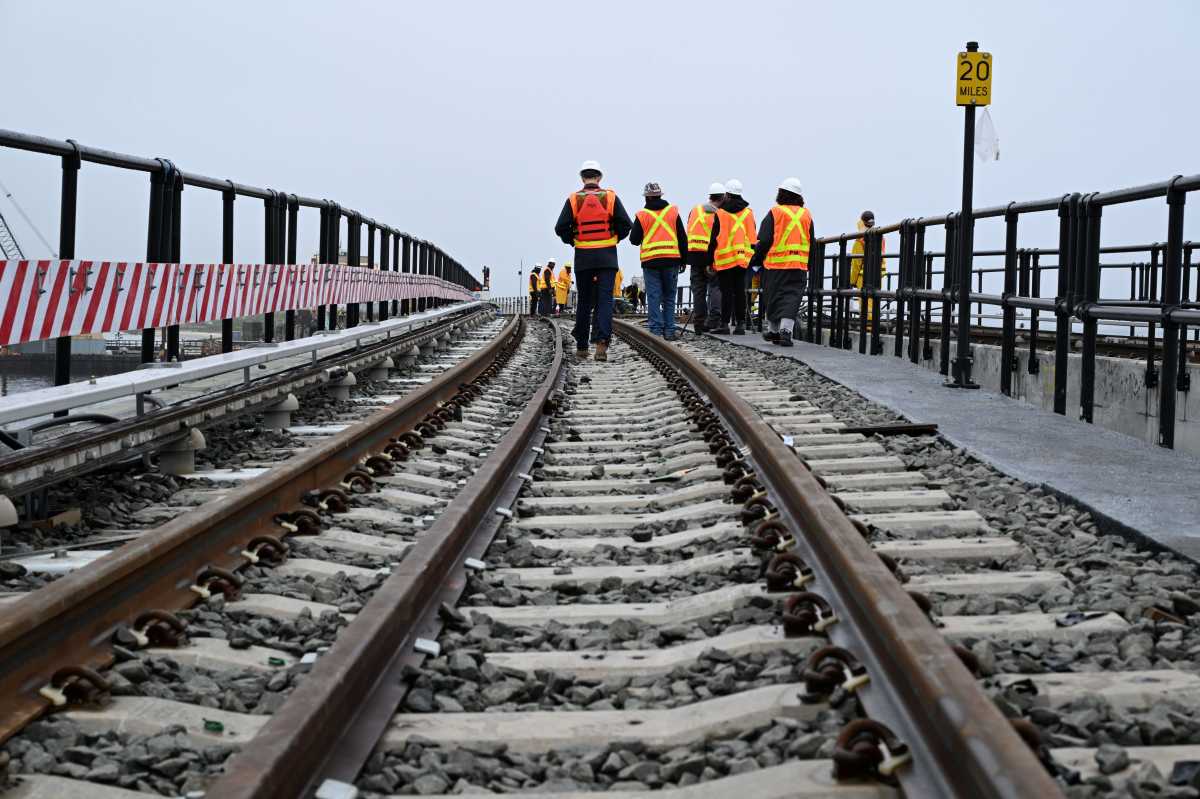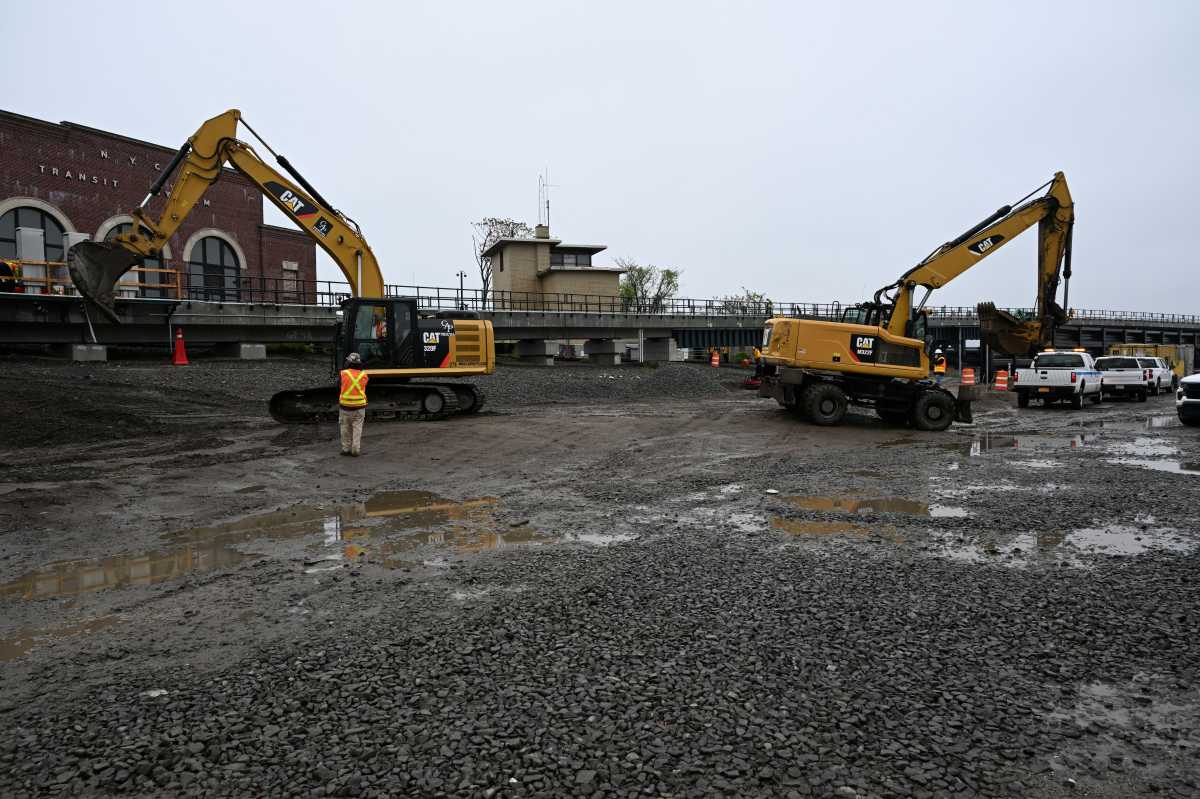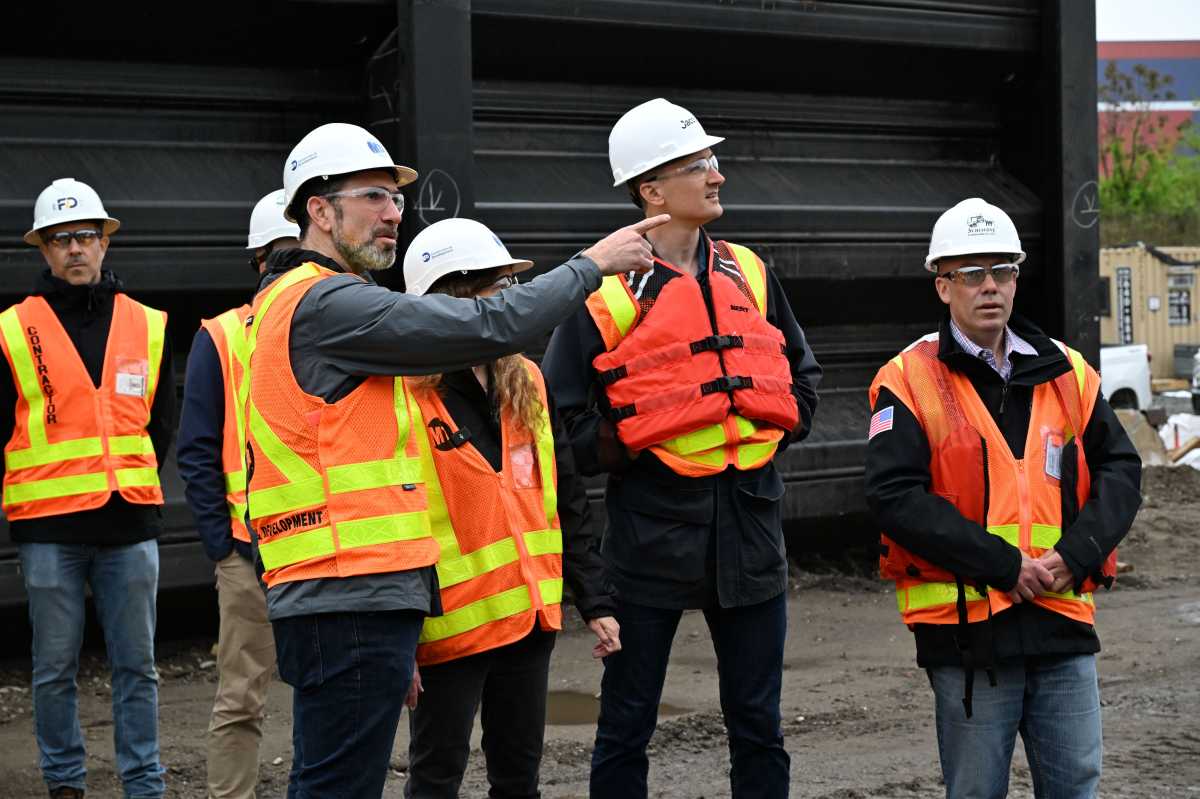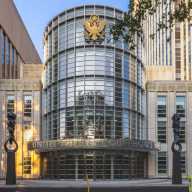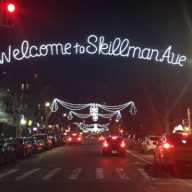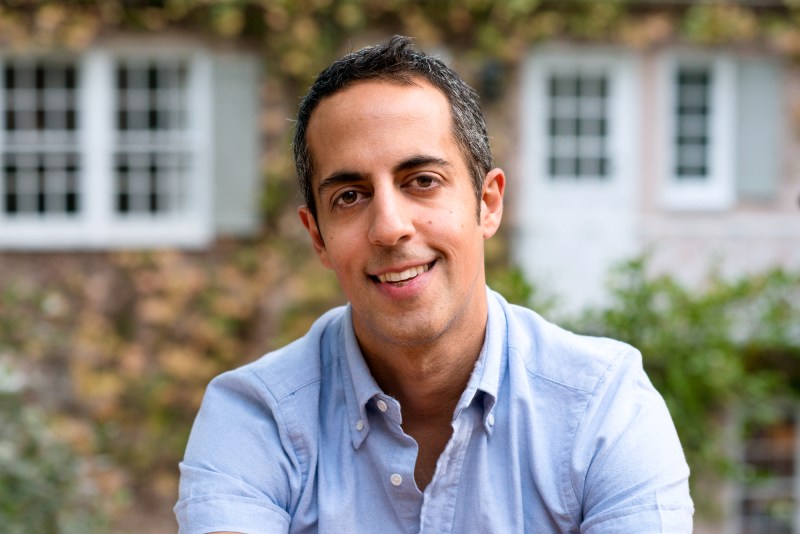MTA leadership and project officials gathered in the Rockaways on Thursday, May 16, for a site tour of the $393 million Rockaway Line Resiliency and Rehabilitation Project, which is nearing completion just in time for the busy Memorial Day travel weekend.
The tour was held near Beach Channel Drive and Beach 80th Street, where construction crews have been working around the clock to strengthen one of the city’s most climate-vulnerable subway lines. The corridor, devastated during Superstorm Sandy, serves nearly 10,000 daily riders and connects the Rockaway Peninsula—home to nearly 125,000 residents—to the rest of Queens.
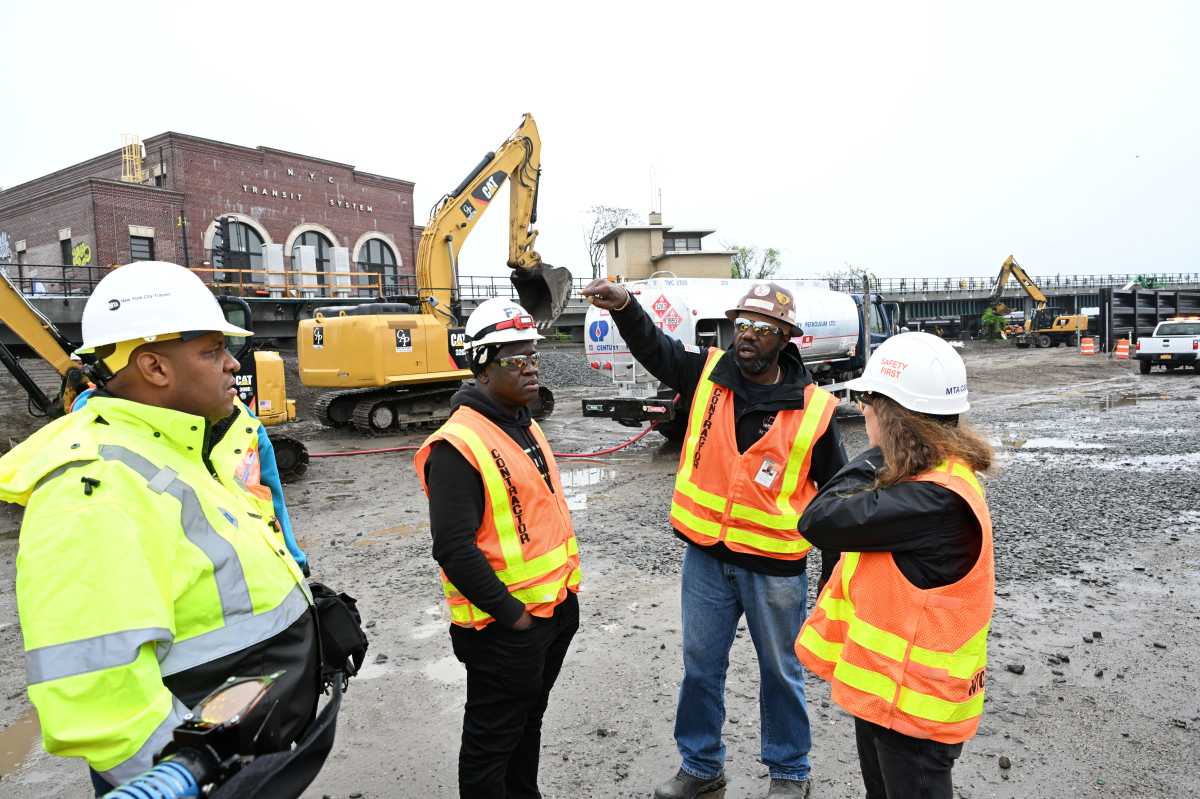
MTA Construction & Development President Jamie Torres-Springer, Project CEO Deirdre Harvey, and officials from Jacobs Contracting and the MTA’s Rockaway team joined the walk-through, providing updates on the ambitious timeline and goals.
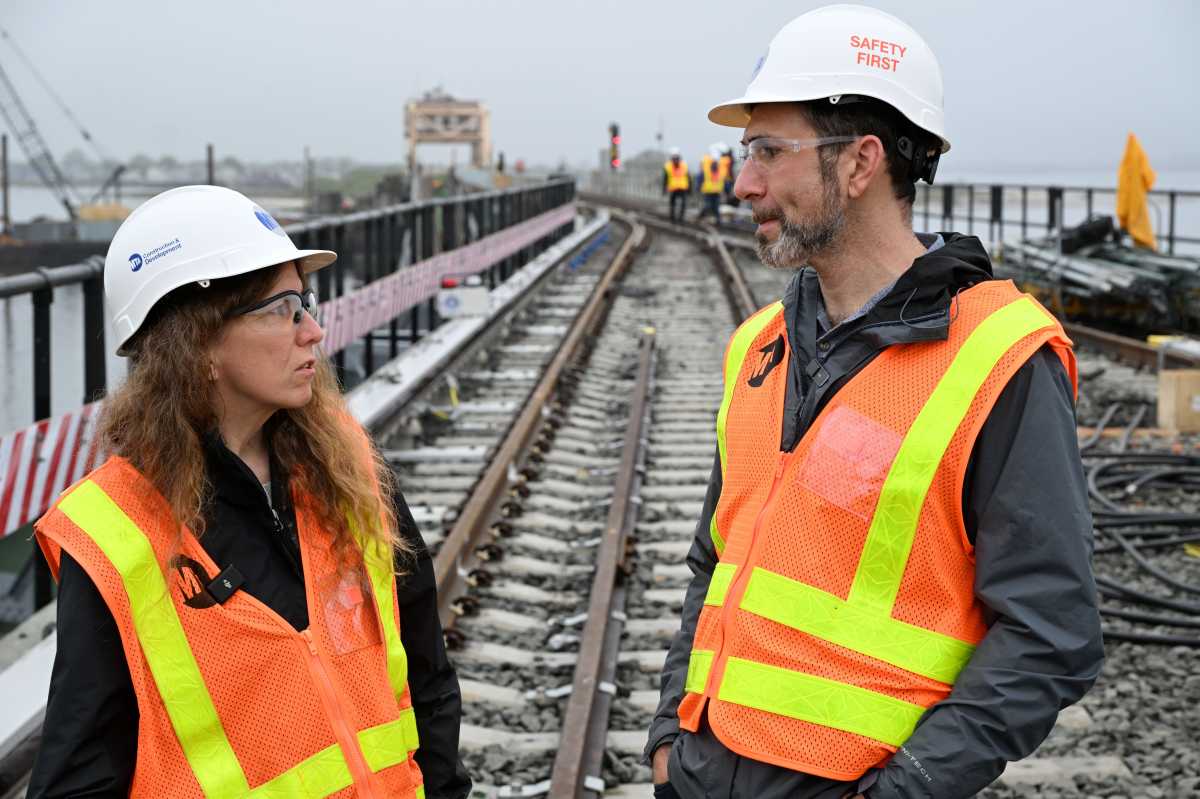
We’re out here in the Rockaways bringing safe, reliable service for a very long time,” Torres-Springer said. “We’re intervening proactively… instead of waiting for the next disaster to strike.”
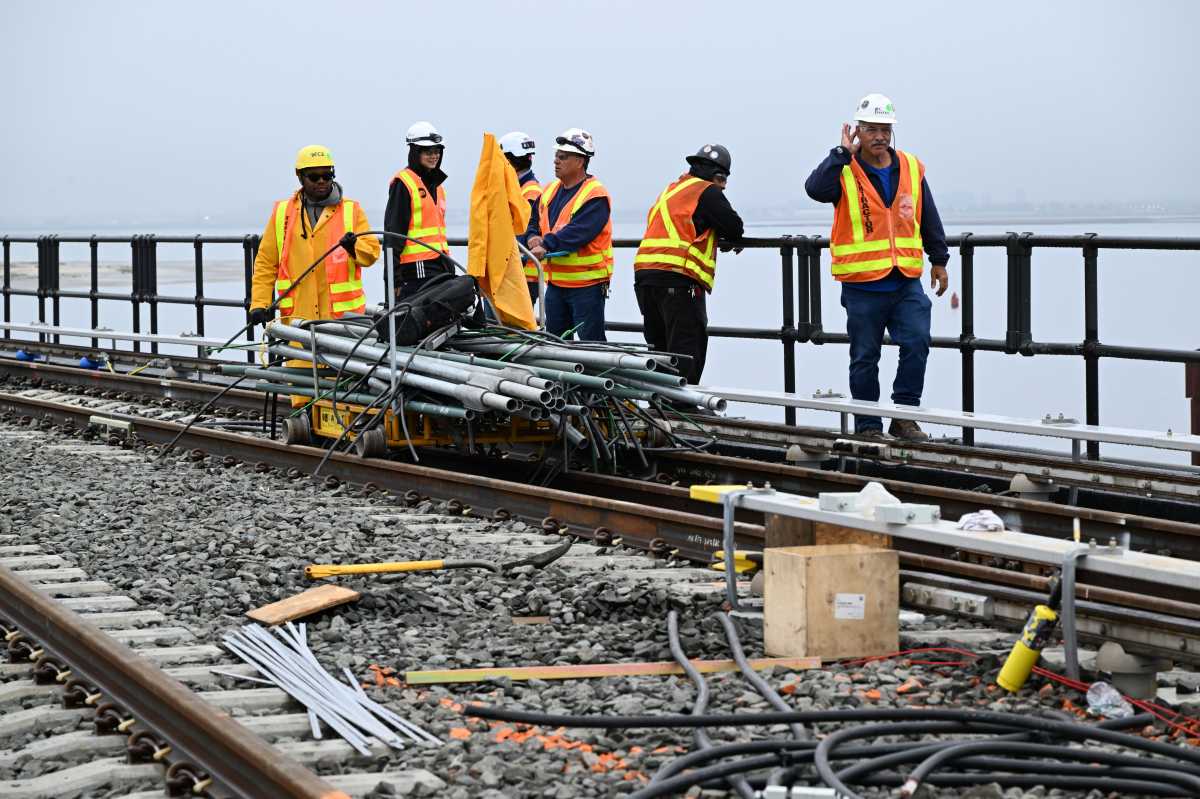
A vital upgrade to 65-year-old infrastructure
Many of the components along the Rockaway Line are more than 65 years old, according to the MTA, and the aging infrastructure required a major overhaul to improve safety, reliability, and climate resiliency.
The project includes the full replacement of the Hammels Wye Viaduct and critical state-of-good-repair work on the South Channel Bridge—the only swing bridge in the NYC Transit system. Additional upgrades involve resiliency enhancements to the viaduct’s superstructure and signal systems, as well as the construction of a new signal tower and crossover at Beach 105th Street.
“This was a very complex operation,” said Project CEO Deirdre Harvey. “We had to remove the steel and concrete structure… the signals, the battery control, the track systems, and then put it all back together like Humpty Dumpty.”
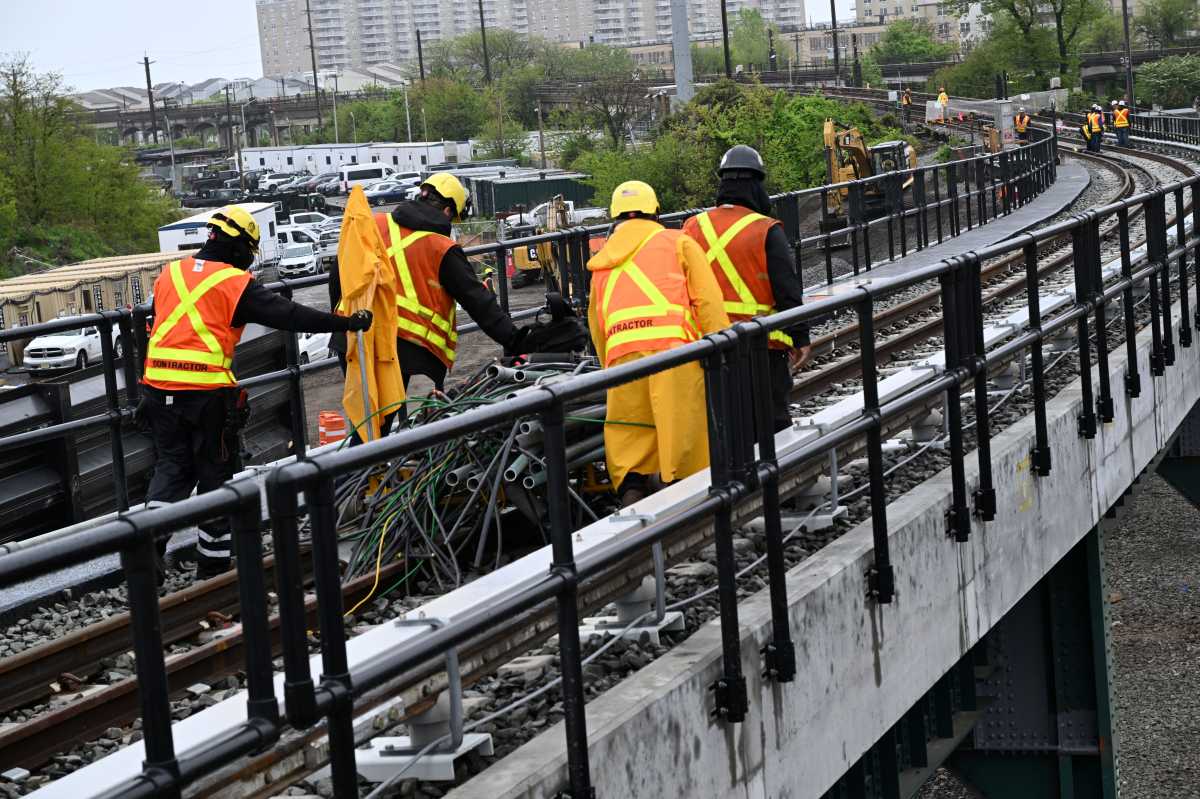
Building resilience after Sandy
Superstorm Sandy suspended A train service to the Rockaway Peninsula for seven months in 2012, exposing the line’s vulnerability to extreme weather events. The current project builds on earlier emergency repairs and incorporates a comprehensive resiliency strategy designed to safeguard the line against rising sea levels and future coastal storms.
As part of the broader Rockaway investment, the MTA has allocated $84 million in federal emergency relief funding for right-of-way restoration and the installation of a protective sheet pile wall north of Broad Channel. An additional $28.5 million is being used for flood-hardening efforts at four key stations to shield vital communications and signal equipment. The North Channel Bridge is undergoing $50 million in pier repairs and communication resiliency upgrades, while $27 million has been dedicated to flood mitigation work at the Hammels Wye campus.
The project also includes embankment reinforcement and track bed protection in the most flood-prone areas of the line.
“After Sandy, A train service to the Rockaway Peninsula was out for seven months,” Torres-Springer noted. “We’ve rebuilt everything so it’s modern and protected from any future coastal storm surge.”
Photo by Ramy MahmoudThe A train was taken out of service between Broad Channel and Rockaway Park on January 17 and is scheduled to resume service on May 19, following a 17-week closure. The MTA remains on track to complete the full scope of the project by the third quarter of 2026.
To minimize disruptions during construction, the MTA and its contractors have taken several steps, including providing advance notice of work, actively monitoring noise and vibration levels with specialized equipment, and coordinating with the NYC Department of Transportation to implement traffic and safety measures.
“They’ll notice that they have service back, smoother rides, and far fewer disruptions,” Torres-Springer said of returning riders.
The MTA emphasized that there are no long-term service outages scheduled between Memorial Day and Labor Day, allowing for uninterrupted beach season travel for Queens residents and visitors alike.

